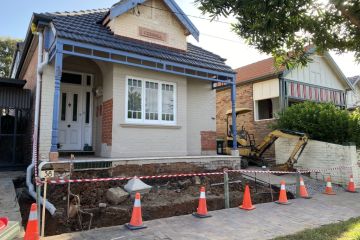Which homeowner’s insurance do I need?

The old adage ‘better safe than sorry’ certainly holds true when it comes to your precious home, treasured belongings or major real estate investments. Shopping around (ASIC recommends obtaining at least three quotes) and reading the fine print once you’ve chosen a policy are both important steps. But it’s even more essential that you have a basic understanding of the type of insurance you need to purchase.
It can come as a big shock when the unthinkable strikes and your insurance coverage is not what you thought. Doing your real estate insurance research could help you find the best type of homeowner’s insurance for your property, and protect you and your assets in the long run.
1. Building insurance
Building insurance takes into account the cost of replacing your home, so it is important not to underestimate these expenses. Rebuilding costs will vary depending on your home’s characteristics and which state you live in. Different insurers take different rebuilding costs into account, so make sure you follow ASIC’s minimum three-quote suggestion. Rebuilding expenses often forgotten can include:
- architects and other professionals needing to draw up new plans
- finding accommodation during the rebuild
- the cost of lodging council plans
- the cost of removing debris
- ensuring worker safety on the building site
You can choose ‘total replacement’ or ‘sum insured’ cover. The first option covers you for the estimated value or standard of your property prior to the incident; sum insured cover is more common and is based on a set payout amount. Depending on the lender and the cover you choose, the sum insured may incorporate a buffer, or you can purchase additional ‘safety net’ cover, which generally adds 25 to 30 per cent to your payment if the sum insured is not enough.
Most building insurance provides a lifetime guarantee on authorised repairs and temporary accommodation for up to 12 months while your home is rebuilt. You will generally be protected against:
- most forms of flood and water damage
- fire
- storms
- lightning damage
- explosions
- tsunamis
- earthquakes
Read the fine print as your policy may not cover infestation, extended periods of vacancy, or flooding in all its definitions – such as flash floods or overflowing rivers. Building insurance is usually required as part of your home loan agreement, most lenders offer these products.
2. Contents insurance
Contents insurance covers the replacement or repair of your household items and possessions. Again, accurately taking stock of your belongings and estimating their replacement value is important. Take photographs and hold onto receipts if possible. Some policies cover contents when you take them out of your home and offer flexible limits on certain valuables. Coverage varies between replacement value or ‘new for old’ and generally protects you against:
- most forms of flooding and water damage
- theft
- fire
- earthquakes
- lightning damage
- storms
- vandalism
- escape of liquid
- civil disturbance
- damage caused by animals
Again, read the fine print as your policy may not cover accidental damage, motor burnout, protection on your portable contents if you take them outside of Australia or New Zealand, or injury to pets.
3. Home and contents insurance
Combined home and contents insurance policies are the most common option for homeowners. These combine the cover and benefits of the first two forms of insurance in one agreement, with one premium.
4. Other forms of real estate insurance
When delving into the real estate market, you should also consider the following types of insurance.
- Mortgage protection insurance covers missed mortgage payments in the event of your injury, illness, unemployment or death.
- Landlord insurance covers your investment property against loss or damage to property you are leasing to other tenants, and provides income protection if your tenant defaults on rent.
- Strata insurance covers loss or damage to your strata title building.
- Lender’s mortgage insurance will be required by your home loan lender if you borrow more than 80 per cent of the value of your property.
If you have any concerns about your current insurer, visit ASIC to lodge a formal complaint. Choice.com.au recommends evaluating your insurance policies annually and provides free, easy-to-use comparison tools.
We recommend
States
Capital Cities
Capital Cities - Rentals
Popular Areas
Allhomes
More







